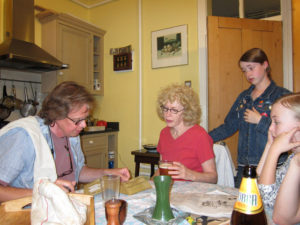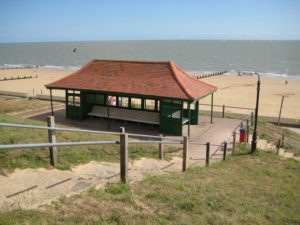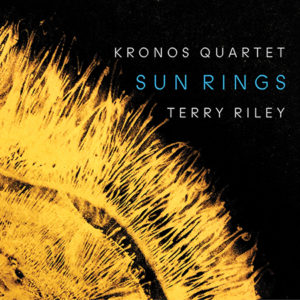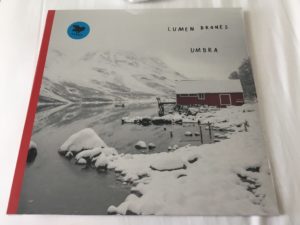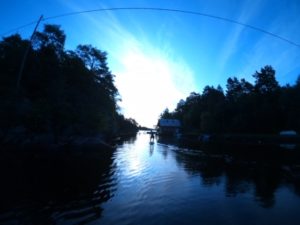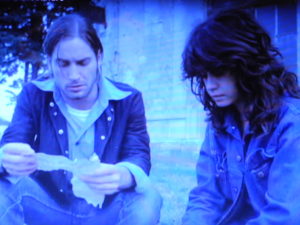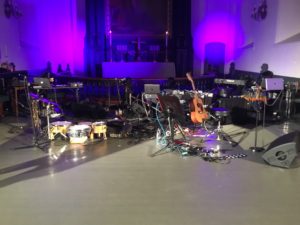
I like a stage scenery after everything has happened. Steve and Mark are always a treat, in their second half they played a fine version of „Threnody“, from their album „Natural Causes“. „You can’t be blamed for perceiving Natural Causes as a „grower“ in the truest sense“, John Garratt once wrote, „listeners need to reconcile the meditative nature of the music with the compositional complexity stirring beneath it all.“
Marc played sitting on the floor with a cushion (i think), handling the percussion with a master degree in subtlety, Steve didn‘t risk to take his infamously weathered guitar on the journey, but his „touring instrument“ had a wonderful open sound. Both played with the acoustics of the space, never being trapped by false grandiosity.
Seeing it from a little distance now, and as being part of his acoustic, non-ecstatic side, I look at „Natural Causes“ as a prequel to their 2019 masterpiece „Life Of“. If you want to go for a wilder ride with Steve, Mark and cohorts, start with „A Man About A Horse“ (2003).
Look at the photo – psychedelic lights are still on from the inspired live-remix, Arve, Eivind, Jon and Erik did using samples from the performances of Trondheim Voices and the duo from Minnesota. Punkt‘s inner circle should finally publish a collection of this quartet‘s live remixes – it would not stand behind the thrills of „Punkt Crimes“, or the buried treasure of the „encounter“ of Jon Hassell and Sidsel Endresen.
In regards to the Norwegian vocal music of Trondheim Voices: all took place with an impressive care for microtonal finesse, perfectly balanced with small breaks for turning pages. A minor quibble is (from a guy who has no long and surely no passionate story with choir music – Fiona is the expert here, and I‘m the bloody amateur), that it was a little bit too long in real time, meaning my headspace was drifting off at some occasions. Good thing is, I was always returning. By the way, being a long follower of Jon Balke’s adventures in modern music, I’m curious about his forthcoming collaboration with the ladies.
At the end, the blonde woman (crossing my paths here for years), who reminded me to not forget my petrol rain coat on a that cloudy Kristiansand evening, was entranced and fulfilled by this afternoon‘s musics that started with Stale Storlokken‘s take on church organ music. For someone like me who has a critical attitude towards the historical baggage of big church organs as being (amongst everything else) instruments of intimidation, I must confess: I liked his journey – turning the grey old pathos into a lovely playground, at least most of the time.
A blue fade-out at the end would have suited better (for me) than the big „brumm brumm“. Anyway, at several moments Stale‘s moods were so light that I could imagine a Bo Hansson tune from „Lord of the Rings“ shining around the corner. From the days of old. I‘m now sitting in my room, totally in the mood for a really cold and sparkling coca cola, honestly.
